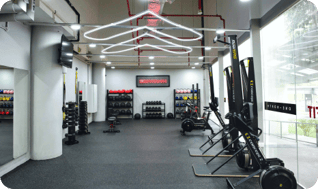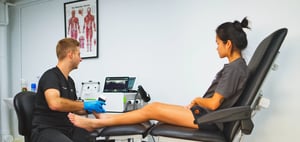
High Arch Foot Pain
(Pes Cavus)
High Arch Foot Pain
(Pes Cavus)
Take the first step towards pain-free living with our specialised treatments
What Are High Arches in Feet?




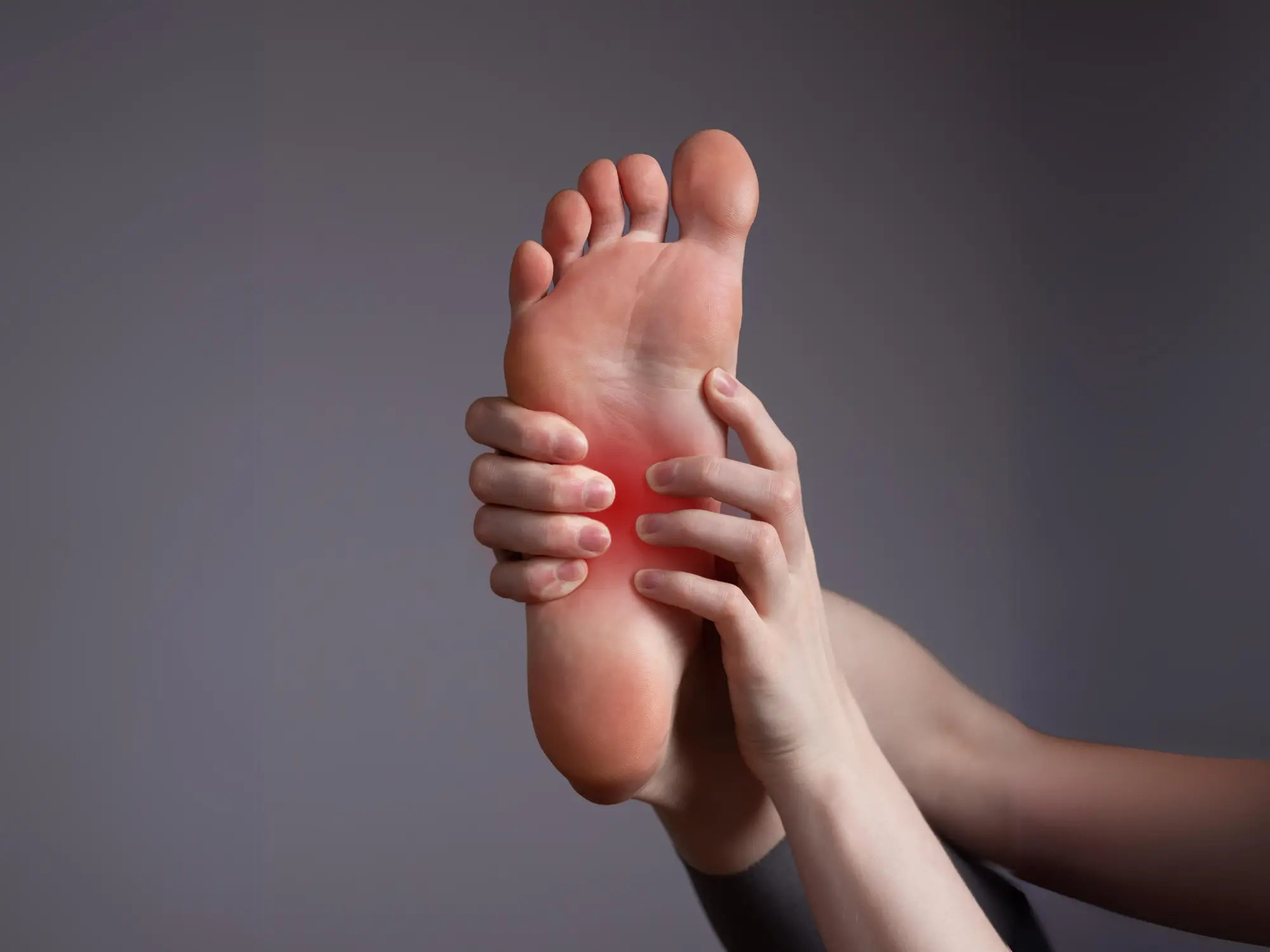
Causes of high Arch Pain
High arches can sometimes be a symptom of underlying neurological disorders that affect the nerves and muscles controlling foot function.
Poor foot mechanics, such as overpronation (excessive inward rolling of the foot) or supination (insufficient inward rolling), can contribute to arch pain conditions.
High arches can lead to excessive pressure on certain areas of the foot, while flat feet can cause overpronation, placing strain on the arches and supporting structures.
Wearing improper footwear, such as shoes with inadequate support, insufficient cushioning, or narrow toe boxes, can exacerbate arch pain conditions.
Activities involving repetitive impact or prolonged standing significantly contribute to high arch pain, especially for those with a rigid foot structure.
Beyond neurological issues, several other medical conditions can directly or indirectly contribute to or worsen high arch pain:
- Arthritis
- Connective Tissue Disorders
- Diabetes
- Past Injuries
Symptoms of Arch Pain
Arch pain may present with the following symptoms:
Pain & Stiffness
in Arch
Pain or tenderness in the arch of the foot, which may worsen with activity.
Swelling & Inflammation
in Foot
Swelling or inflammation in the affected area.
Foot & Ankle
Instability
A feeling of unsteadiness or instability in the foot and/or ankle.
Discomfort Beyond
the Arch
Discomfort that may extend to the ankle, heel, or other parts of the foot.
Calluses & Corns on the Sole
Development of hard, thickened skin (calluses) or painful corns on the sole of the foot.
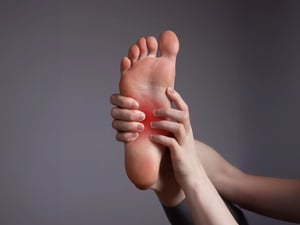

Causes of High Arch Pain
Beyond neurological issues, several other medical conditions can directly or indirectly contribute to or worsen high arch pain:
- Arthritis
- Connective Tissue Disorders
- Diabetes
- Past Injuries
Causes of High Arch Pain
Several factors may increase susceptibility to these conditions:
Neurological Conditions
High arches can sometimes be a symptom of underlying neurological disorders that affect the nerves and muscles controlling foot function.
Biomechanical Issues
Poor foot mechanics, such as overpronation (excessive inward rolling of the foot) or supination (insufficient inward rolling), can contribute to arch pain conditions.
Foot Structure & Abnormalities
High arches can lead to excessive pressure on certain areas of the foot, while flat feet can cause overpronation, placing strain on the arches and supporting structures.
Improper Footwear & Lack of Support
Wearing improper footwear, such as shoes with inadequate support, insufficient cushioning, or narrow toe boxes, can exacerbate arch pain conditions.
Overuse & Repetitive Stress on Feet
Activities involving repetitive impact or prolonged standing significantly contribute to high arch pain, especially for those with a rigid foot structure.
Medical Conditions
Beyond neurological issues, several other medical conditions can directly or indirectly contribute to or worsen high arch pain:
- Arthritis
- Connective Tissue Disorders
- Diabetes
- Past Injuries
Why Choose UFIT for High-Arch Foot Therapy?
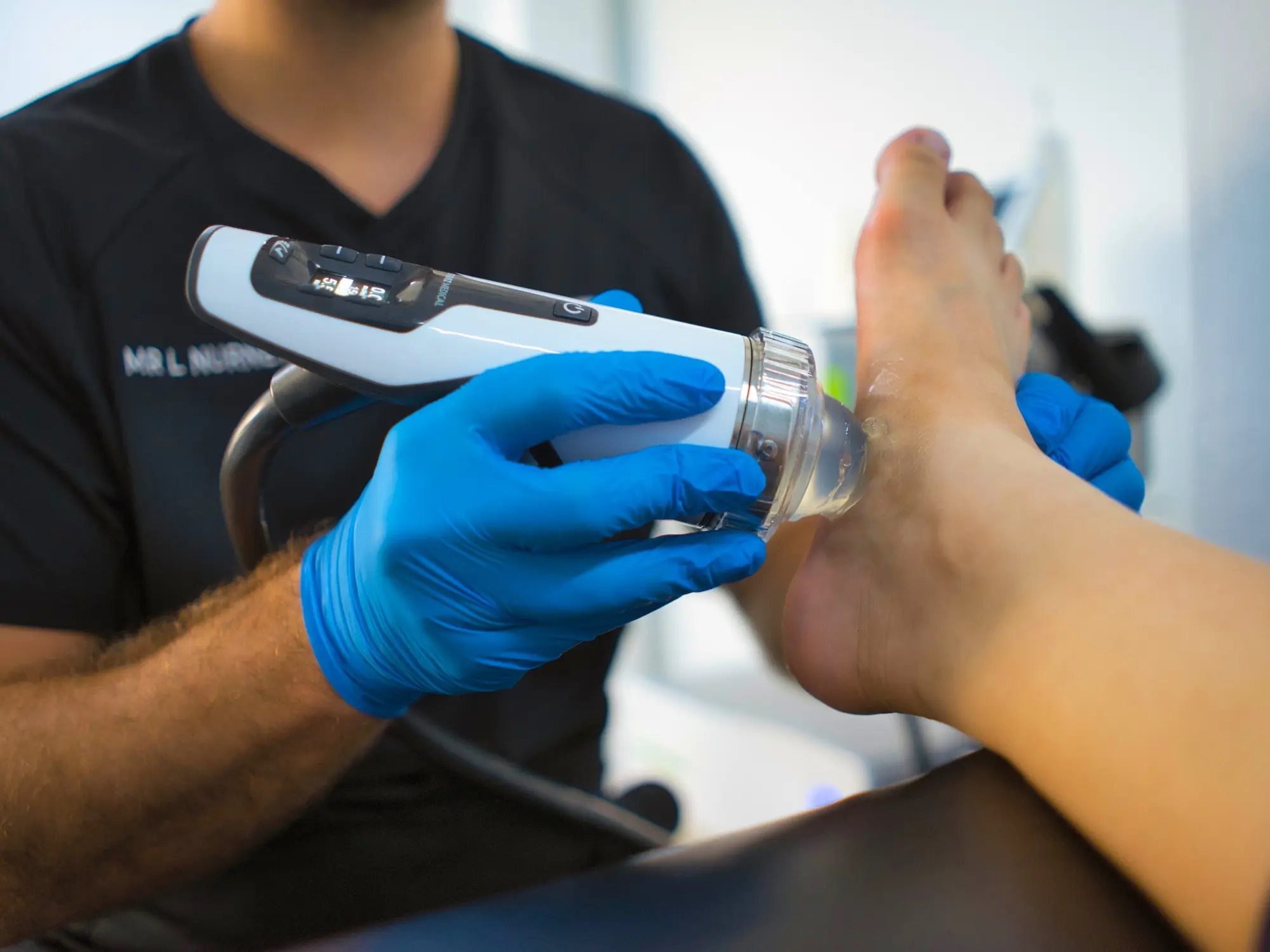
Focused & Radial Shockwave Therapy
Utilising state-of-the-art shockwave technology, we target the source of pain to promote healing and reduce discomfort.
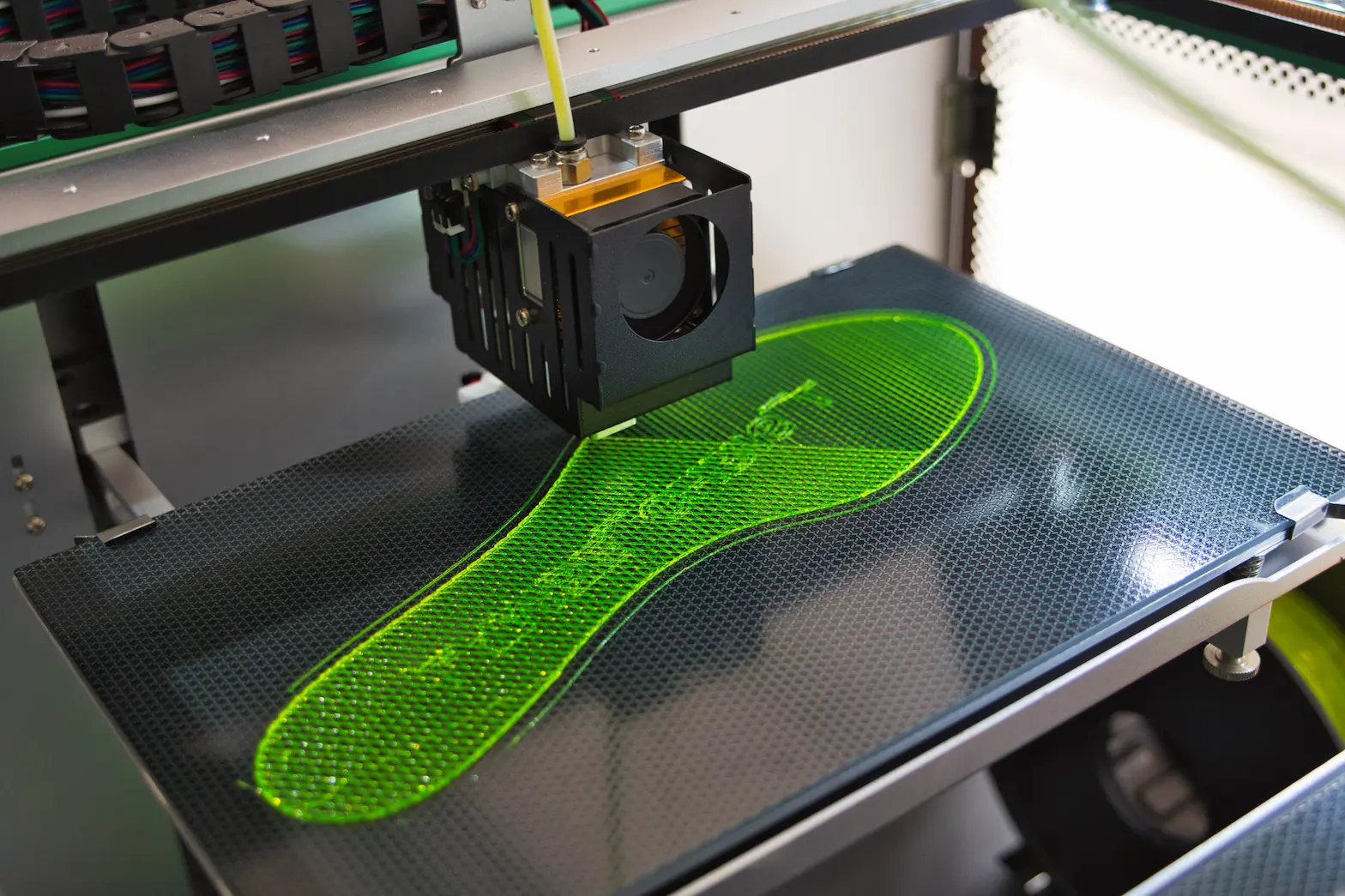
3D Printed Insoles
Our custom-designed insoles are precision-engineered to provide optimal support and cushioning, relieving pressure and distributing weight evenly across the forefoot.
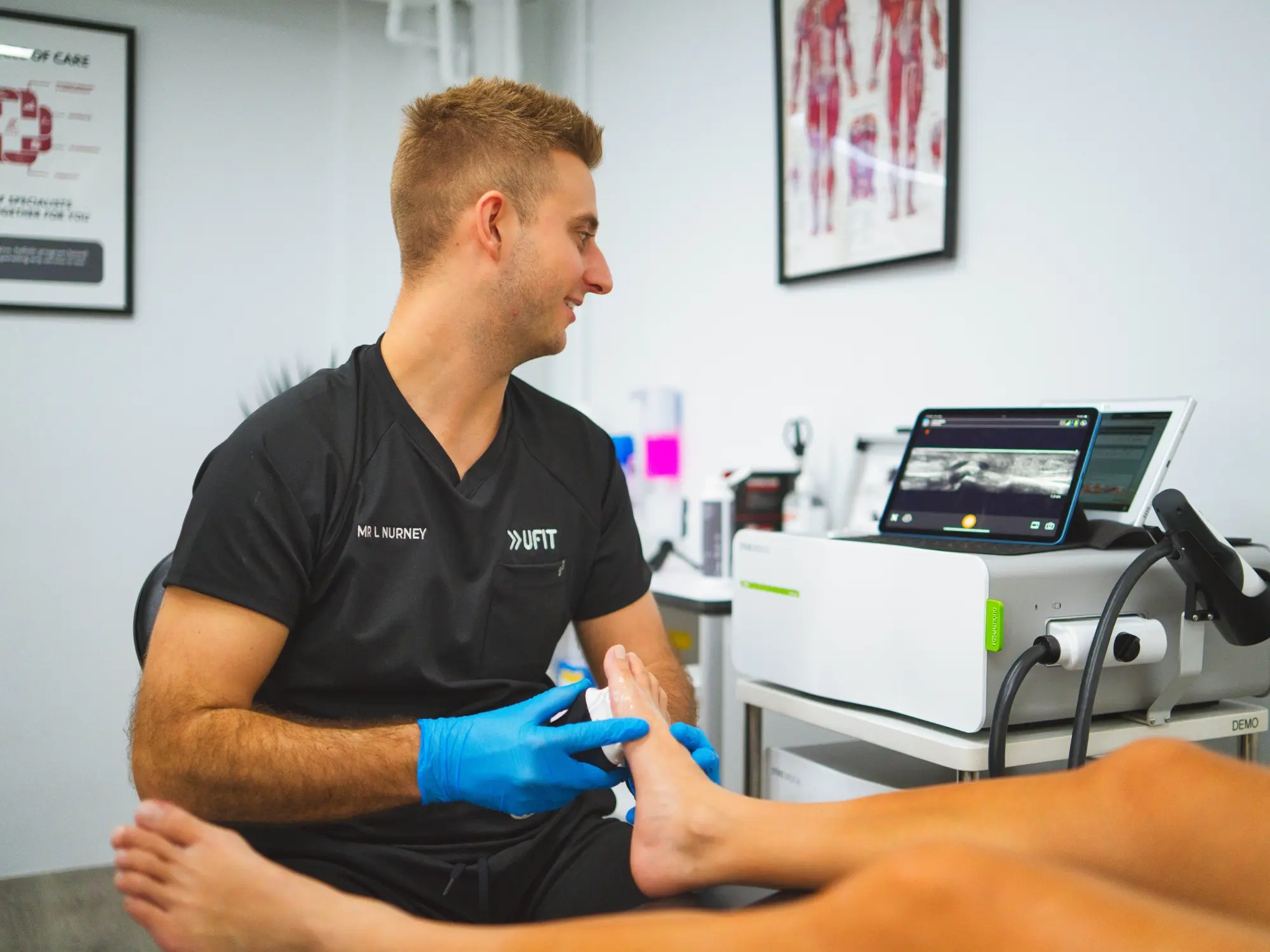
Highly Qualified Podiatry Team
Our podiatrists have more than 5 years of experience helping clients with their foot health, so you can rest assured you are in safe hands.
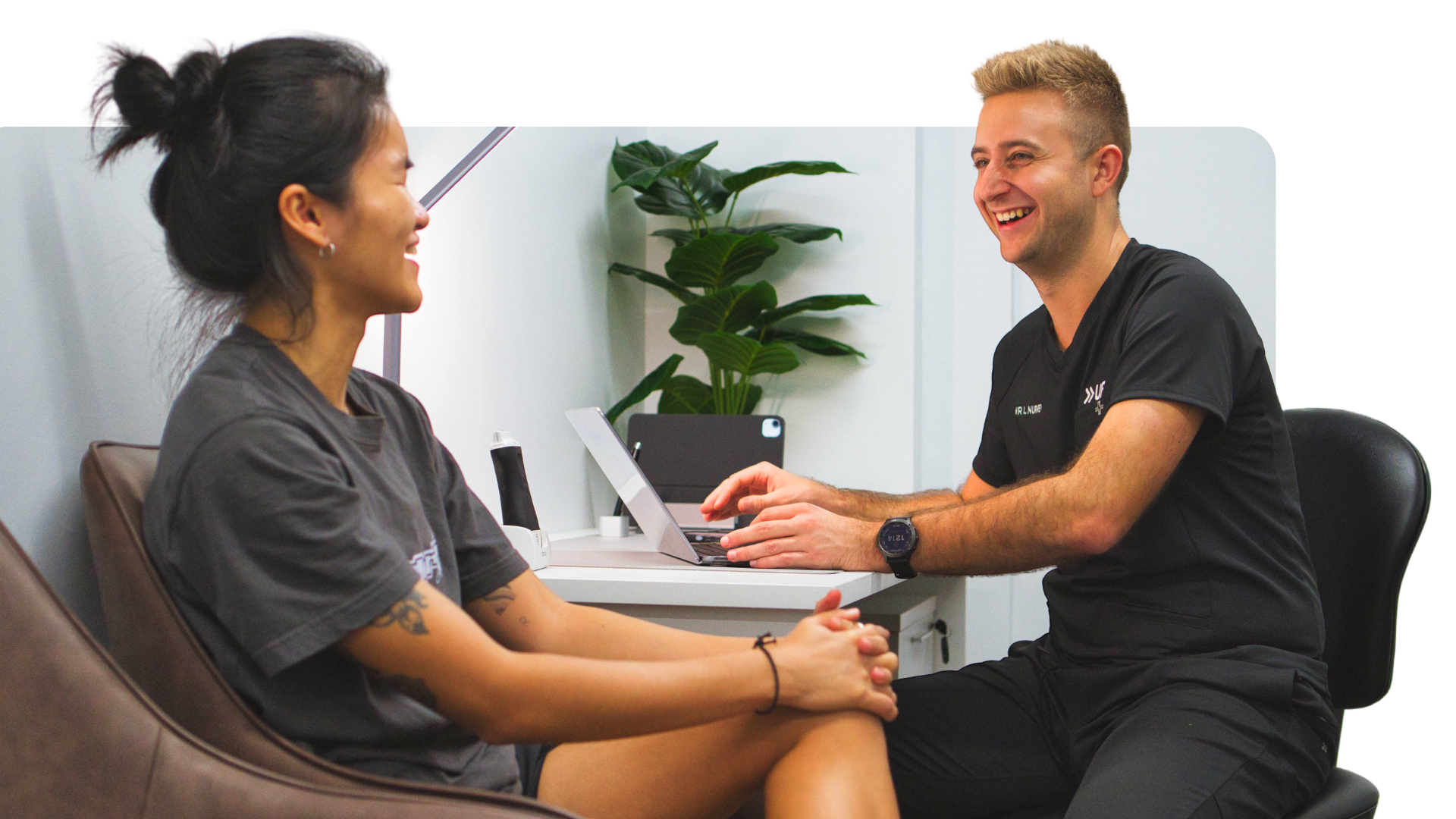
Book online & get $20 off your first consultation
- Personalised, evidence-based care
- Premium, central clinic in the CBD
- Experienced podiatary team
*Terms & Conditions:
- Valid for first time patients who have made prepayment at least 24 hours before the appointment
- Non-cancellable and non-transferable
- Applicable only for initial consultation & can't be used in conjuction with any other offers or promos
Why Choose UFIT’s Podiatry Services?
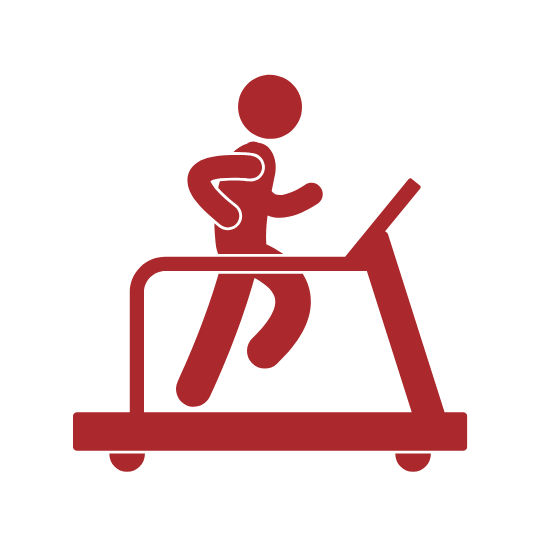
Advanced Technology
As a leading podiatry clinic in Singapore, we stand out by offering advanced gait analysis and in-house 3D-printed insoles, all accompanied by a comprehensive report to provide unparalleled insights into your lower limb biomechanics.
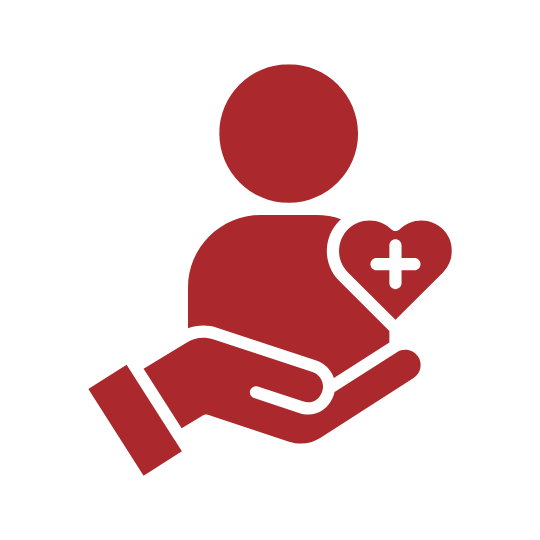
Elite Care for Every Individual
Our podiatry services offer personalised, evidence-based care for a wide range of individuals, including athletes, adults and children. So if you’re experiencing lower limb pain, our expert team can provide comprehensive support to get you back to doing the things you love.

Team of Experts with Optimal Results
We offer more than just solutions for your injury or pain. Through UFIT's integrated Circle of Care, you gain access to our team of expert podiatrists and other healthcare professionals, bringing together a vast range of experience and knowledge to achieve optimal outcomes for your foot and lower limb health.
Why Choose UFIT for High-Arch Foot Therapy?
At UFIT Podiatry, we offer advanced treatments to alleviate arch pain and restore mobility:
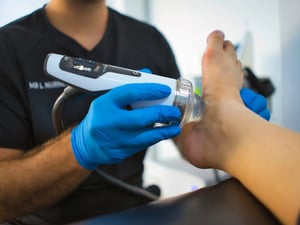
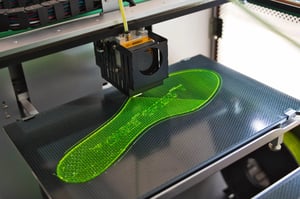
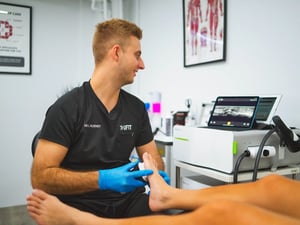
Our podiatrists have more than 5 years of experience helping clients with their foot health, so you can rest assured you are in safe hands.
Hear from our Clients
⭐⭐⭐⭐⭐
“I recently had an appointment with podiatrist Lewis Nurney at UFIT, and it was a wonderful experience. I’ve been dealing with a long-standing issue, but with Lewis’s expertise, kindness, and patience in listening to my concerns, I’ve finally been able to solve the problem and feel so much better.
The clinic is modern with high-tech equipment, and Lewis explained everything clearly, making me feel confident in the treatment plan. Now I’m feeling ready and prepared for the 10K Standard Chartered Marathon! If you’re looking for expert podiatry care, I highly recommend Lewis and the team at UFIT!”
⭐⭐⭐⭐⭐
“Came back to UFIT today after a year since my last consultation with Lewis Nurney. I was very relieved to know that my Achilles issues can be fixed with Lewis’s great advice. He would show me how to perform rehab exercises that will be able to help me throughout my recovery. I highly recommend UFIT podiatry to anyone in need of advice or help.”
⭐⭐⭐⭐⭐
“I had the pleasure of visiting Dr. Lewis through a recommendation and it turned out to be an excellent one, particularly after experiencing so many already. The thoroughness of his examination and help at each step of the process is beyond impressive. He took the time to listen to all my concerns and thoroughly explained my diagnosis and treatment options.
He made sure that I was well-informed and comfortable with the decisions being made without any pushing. I would highly recommend him for anyone in need of a skilled and caring podiatrist.”
Meet Our Podiatry Team

Lewis Nurney
Lewis is a highly experienced podiatrist with over 5 years of practice in Singapore, bringing his expertise to UFIT's comprehensive Circle of Care. As Head of Podiatry at UFIT Club Street, he specialises in sports podiatry, innovative orthotics for adults and children (including 3D-printed custom insoles, Paediatric AFOs and SMOs for pediatric flat feet), and minimally invasive procedures.
A first-class honours graduate from the University of Huddersfield (UK), Lewis holds dual certifications in Extracorporeal Shockwave Therapy (ESWT), Diagnostic Ultrasound and Running Gait analysis. Previously with East Coast Podiatry, he now provides patient-centred care at UFIT, specialising in non-surgical management of conditions like Foot Pain, Plantar Fasciitis and Achilles Tendinopathy in both children and adults, ultimately focused on alleviating discomfort and restoring optimal foot function.
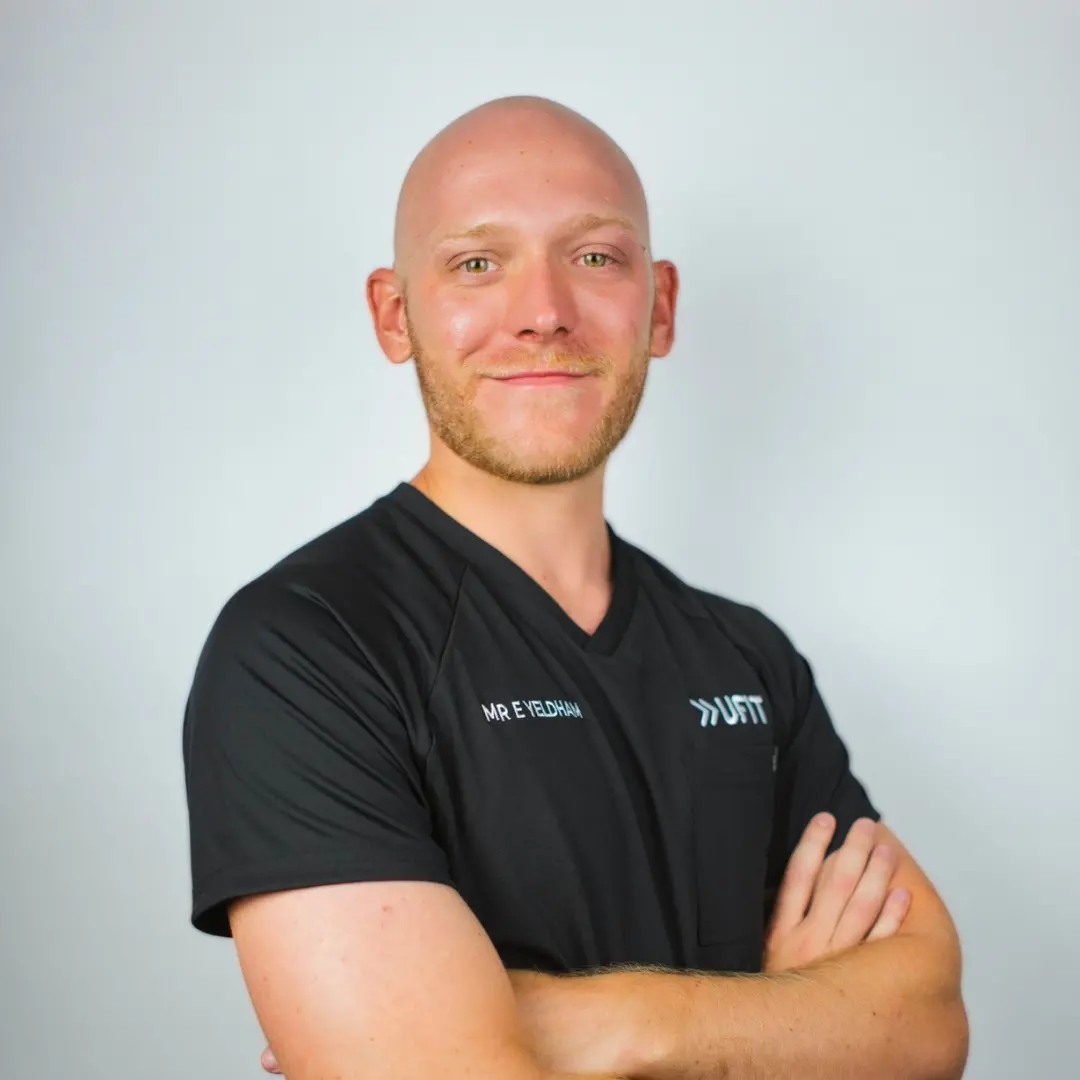
Elliot Yeldham
Elliott is a dedicated podiatrist with over 7 years of healthcare experience, gained in both the UK's National Health Service (NHS) and private practice. He holds an Honours degree in Podiatry from Cardiff Metropolitan University (Wales), and brings a wealth of expertise to Singapore.
Specialising in Musculoskeletal (MSK) podiatry, Elliott's interests include sport podiatry and the management of gait abnormalities in both adults and children. He is also recognised for his skill and patient-focused approach in minimally invasive procedures for ingrown toenails and wart removal. Committed to a patient-centred and multidisciplinary model, Elliott actively stays informed of the latest healthcare advancements through clinical research and international conferences.
Factors That Contribute To Arch Pain
Arch pain conditions, including Posterior Tibial Tendon Dysfunction (PTTD), Navicular Syndrome, and various midfoot conditions, can affect individuals across different demographics. Several factors may increase susceptibility to these conditions:
ALL INDIVIDUALS
ALL INDIVIDUALS
We offer personalized, evidence-based lower limb care for athletes, active individuals, and parents seeking specialized treatment for their children.
We go beyond addressing your injury or pain. Through our Circle of Care, you can access our team of experts with a vast range of specialised experience and knowledge.
What to expect on your first visit
We use cutting-edge diagnostic tools to get real-time insights into your soft tissue, joints and structures to provide a fast and accurate diagnosis.
Post-assessment, you will receive clear and comprehensive reports detailing our findings. This will allow you to make informed decisions on your treatment plan.
Together with you, we formulate a comprehensive and personalised treatment plan that suit your goals and preferences.
Book Your Consult for High-Arch Foot Pain Now
Visit Our Podiatry Clinic
21 Club St, #01-01
Singapore 069410
+65 6225 5059
podiatry@ufit.com.sg
View on Google Maps
Trusted by Global & Local Podiatry Associations



Frequently Asked Questions about High Arch (Pes Cavus)
The primary difference between flat feet and high arches lies in the arch height and foot contact with the ground. High arches (pes cavus) occur when the arch is significantly raised.
Conversely, flat feet (pes planus) involves a collapsed or very low arch, where almost the entire sole makes contact with the ground. This difference in structure impacts shock absorption, weight distribution, and overall foot mechanics.
Yes, high arches can often be genetic or hereditary. It is common for this foot type to run in families, suggesting a genetic predisposition. In some cases, high arches can also be linked to underlying neurological conditions, which may also have a hereditary component.
Yes, orthotic shoe insoles are a highly effective treatment for managing high arch pain. They are designed to provide targeted support to the arch, redistribute pressure evenly across the foot, and enhance shock absorption.
High arches can impact joints higher up the kinetic chain, including the knees and even the lower back. Their rigid structure and reduced shock absorption can transfer increased stress to these areas. This can lead to pain, discomfort, and an increased risk of injury over time due to compensatory movements.
High arches can change the way your body is aligned. When the foot has less flexibility, it can cause uneven weight distribution, making other parts of the body, like the ankles, knees, hips, and spine, work harder to keep you balanced. This can lead to poor posture and pain in areas like your back or neck over time.
Yes, high arches can impact athletic performance. Their reduced flexibility and shock absorption can make the foot less efficient at absorbing impact during activities like running or jumping. This can lead to increased fatigue, a higher risk of stress injuries (like stress fractures or plantar fasciitis in Singapore), and potentially limit power transfer, affecting overall speed, endurance, and agility.
Podiatry Blog
Check out the podiatry articles on our blog, written by our very own experts!

.png?width=301&height=187&name=Website%20Navigation%20Images%20(3).png)

-1.jpg?width=1984&height=1196&name=UFIT%20Club%20Street%20Front%20(4)-1.jpg)


